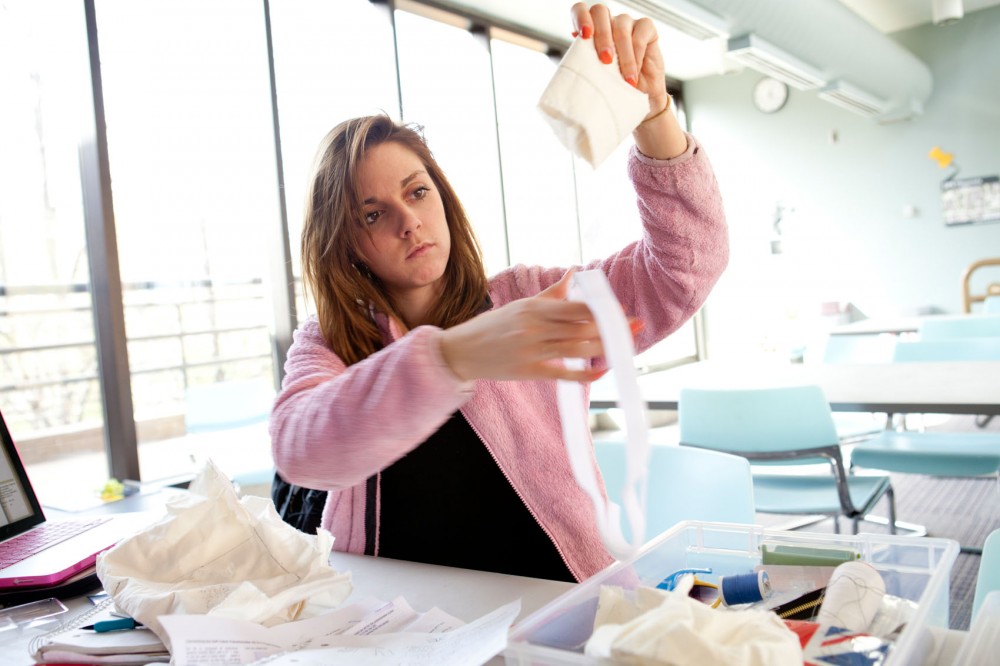Kaila Bibeau never thought the homework for her apparel design course would help her land a summer job with NASA.
She and 11 other students have spent the semester working on spacesuit prototypes as part of Lucy Dunne’s 3000-level apparel design class at the University of Minnesota. The class will eventually present their work to NASA in Houston this spring, but Bibeau will also spend the summer in Texas to continue working with the nation’s space program.
“I will be able to take the concepts that I have been researching throughout the semester and hopefully apply some innovative contributions to NASA,” the junior apparel design major said.
Bibeau will work in the human interface branch of the Johnson Space Center and will help integrate computer interfaces and other electronics into a garment. Cory Simon, a human systems engineer at NASA, said she will be a “domain expert” in garment design and will also do some user testing.
The class has been working closely with Simon and his teams at the Johnson Space Center, who were interested in Dunne’s research on e-textiles, or wearable technologies. The students are crafting functional prototypes they hope will eliminate problems with current suits and improve their capabilities to utilize the e-textiles.
Three of the five projects Dunne’s class is focusing on are closely related to Simon’s current research.
“I’m developing a garment that can provide wearable displays, controls and sensors inside future space habitats,” Simon said.
Bibeau’s project in Dunne’s apparel design studio correlates well to Simon’s research and what she’ll be doing this summer.
“[I am] exploring placement of different removable swatches on a suit for the astronauts to wear while on missions,” she said.
Her work includes testing different fasteners and modes of application in addition to exploring problems related to the visibility and accessibility of the components.
Just as Dunne’s classroom research is funded by the Minnesota Space Grant Consortium, the grant will also pay for Bibeau’s internship. The NASA-funded program is used to finance educational endeavors in science, technology, engineering and math. A large emphasis is also put on supporting groups not typically involved in STEM, such as women.
Simon said that eight students applied for the summer internship, the majority with backgrounds in polymer engineering, aerospace and business. He said that Bibeau’s knowledge and skills “were the best fit.”
“While I am there, I am looking forward to being able to learn about the other exciting projects taking place at the space center. Cory [Simon] has assured that I will have the opportunity to do so,” Bibeau said.


